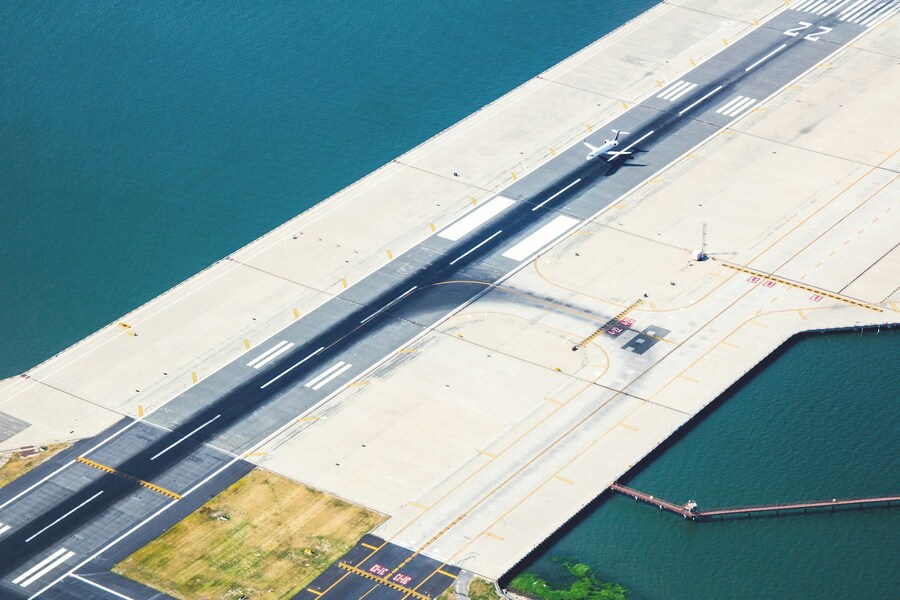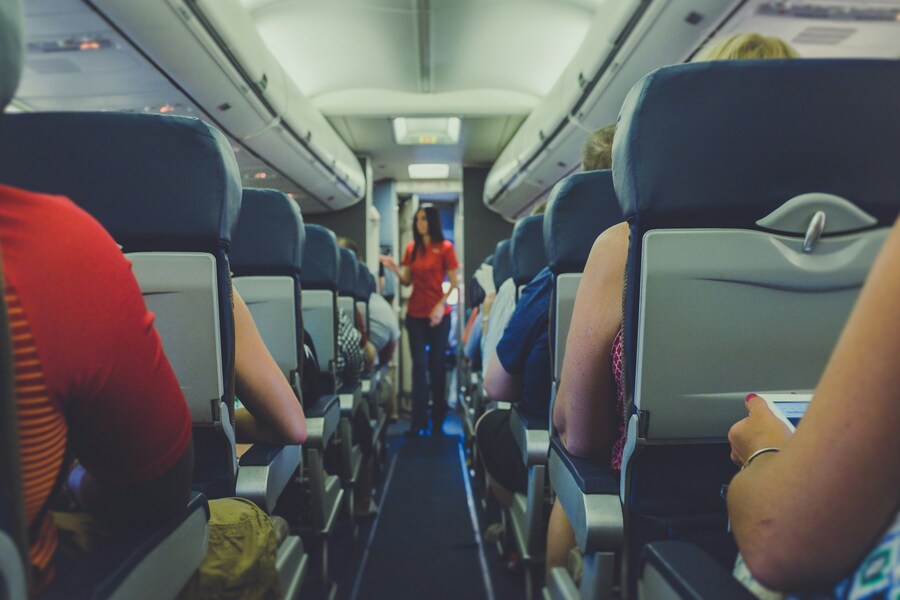Airplane cabins being cramped is a really common complaint among travelers. It's not just the passengers who notice – some politicians have asked the Federal Aviation Administration (FAA) to think about setting minimum seat sizes. With seats that are too small for most people, there are safety risks during emergency evacuations, but comfort matters too. Here's why airplane seats are getting smaller – and how to steer clear of being stuck in one on your next flight.
Are airplane seats shrinking? How can you get more legroom?
Seat space has decreased over the last 30 years

Source: Julio Rivera/Unsplash
"Seat pitch" refers to the space from one seat to the same spot on the seat behind it. In simpler terms, it's about legroom. USA Today found that the average seat pitch in economy class among major U.S. airlines has fallen from 31 to 32 inches in the 1990s to just 30 inches today. While a 1 to 2-inch difference might not seem significant, it's noticeable, especially for taller people.
It's also important to mention that seatbacks are often thinner now. These newer "slimline" seats let airlines fit in more seats per plane. They aim to give more personal space by moving magazine pockets higher or making tray tables smaller. However, this means airlines can say passengers have the same above-the-knee space even though seats are closer together below the knee, according to USA Today. With slimmer seats, padding is decreased, which can affect how comfortable passengers feel.
Besides seat pitch, seat width has also decreased. The average seat width on many U.S. airlines has gone from 18.5 inches to 17 inches since the 1960s, even though the average American man weighs 30 pounds more today, according to the Washington Post. This raises safety issues and whether the government should set minimum seat sizes.
Lately, several bills have been brought up in Congress, and the FAA has asked for public input on this issue, but nothing has been finalized yet. In 2022, the Justice Department stated the FAA's review hasn't shown a need for minimum seat sizes but that they are still studying the topic, as noted by Reuters.
Increasing expenses and heightened rivalry

Source: Vladimir Solomianyi/Unsplash
To see why legroom is getting smaller, look at the rising costs and competition airlines face today compared to 30 years ago. The boom of ultra-low-cost carriers (ULCCs) has pushed airfares down. These airlines offer fares as low as $19 one way, but rely on upselling extras like seat choices, carry-on bags, and printing boarding passes at the airport.
Budget airlines manage to provide such cheap tickets by cramming more seats into each plane. While traditional airlines like Delta have at least 30 inches of pitch, others like Spirit and Frontier offer even less, usually between 28 and 29 inches. As these budget carriers expand, overall seat pitch across the industry has decreased.
Airlines are also dealing with rising fuel costs, labor shortages, and increasing labor expenses. They've shifted those costs to customers, leading to a huge 25% rise in ticket prices from 2023 to 2024. Airlines are now keen on finding new revenue streams. Reducing legroom allows them to add more seats and charge extra for preferred legroom in economy or promote first-class.
But how much smaller can airplane cabins become? In 2017, American Airlines said it would retrofit its Boeing 737-800 to add seats. Most economy seats shrank from 31 to 30 inches of pitch, and 3 rows at the plane's back got only 29 inches – similar to Spirit. After facing backlash, the airline decided against this change, suggesting that major carriers likely won't reduce legroom further, at least for now.
Tips for scoring extra legroom on your next flight

Source: Kenny Eliason/Unsplash
If you want a bit more room to stretch out, there's some good news. First off, some U.S. airlines still give you decent legroom. On JetBlue, there's a minimum of 32 inches between seats, which is more than any other U.S. airline. Some international airlines go even further; for instance, Japan Airlines offers 34 inches of legroom in its regular economy seats, making those long flights a bit more bearable.
If you're on an airline with less space, you might be able to pay for better legroom. These upgraded economy seats have various names like Economy Plus on United, Comfort+ on Delta, or Main Cabin Extra on American. Plus, in late 2024, Southwest Airlines plans to add extra-legroom seating, allowing passengers to pay a bit extra for an extra 5 inches of space. Also, if you have elite status, you usually get to pick these seats for free.
There are also a few tips to snag a roomier seat. When you book, check out the detailed seat map for your flight to find any quirks – for example, exit row seats without a front seat. Sometimes better seats pop up closer to check-in, so keep an eye on the map until you fly. And a little planning helps: travel experts say seats toward the back are chosen last, so you might luck out with an empty seat next to you – a nice bonus in a time of smaller economy seats.
Make your trip easier with smart parking solutions from ParkingNearAirports.io!
Traveling can be stressful, but planning ahead can ease the process. One way to simplify your trip is by booking off-site airport parking through ParkingNearAirports.io. Our smart booking platform offers airport parking coupons and exclusive airport parking offers, ensuring you get the best deals for your journey. With affordable and convenient off-site parking options, our service helps you start your trip on the right foot. Save time, money, and hassle by securing your spot today!






